To blend myrrh and frankincense essential oils, start with a 1:2 ratio as your foundation. These powerful base notes should make up 5-20% of your total blend, creating a deep, resinous character with warm, woody undertones. Store your mixture in dark glass bottles and let it rest for 48 hours to achieve ideal synergy. You'll want to explore how middle notes like lavender and bright citrus can enhance this timeless combination.
Understanding Base Note Properties in Myrrh and Frankincense
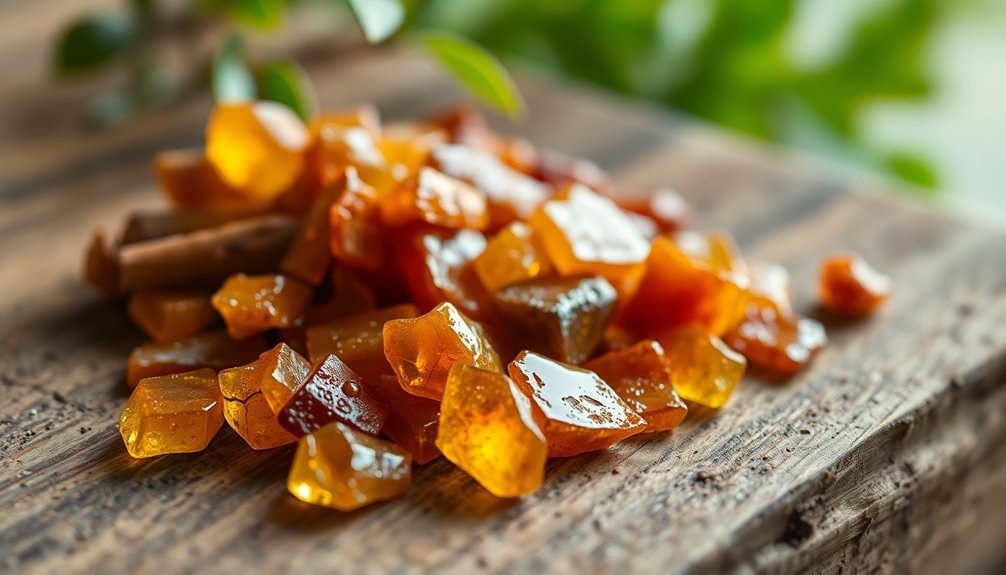
Base notes serve as the foundation of essential oil blends, with myrrh and frankincense standing out as two of the most powerful anchoring scents. When you're creating a blend, these base notes typically comprise 5% to 20% of your total mixture, providing the deep, lasting foundation that supports the entire fragrance profile.
In your Frankincense and Myrrh blend, you'll notice how myrrh's deep, resinous character works in perfect harmony with frankincense's warm, woody attributes. Together, they create a sophisticated grounding effect in your essential oils composition.
The fixative properties of both oils help stabilize the more volatile components of your blend, ensuring your fragrance develops beautifully over time. You'll find that myrrh contributes earthy depth while frankincense adds a smooth, aromatic dimension to complete the base note structure.
Historical Applications and Modern Blending Techniques
Throughout history, frankincense and myrrh have held positions of immense cultural significance, from their use in ancient Egyptian ceremonies to their prominence in Hebrew religious rituals. Today, you'll find these ancient resins at the heart of modern essential oil blends, where their historical significance meets contemporary aromatherapy practices.
| Historical Use | Modern Application |
|---|---|
| Religious Ceremonies | Meditation Blends |
| Embalming | Skincare Products |
| Anointing Oils | Perfume Base Notes |
| Temple Incense | Aromatherapy Diffusion |
| Medicinal Treatments | Therapeutic Blends |
When you're creating your own blends, you'll discover that frankincense and myrrh work as powerful base notes, providing a deep, grounding foundation that enhances both the longevity and emotional depth of your aromatherapy compositions. Their time-tested partnership continues to influence modern blending techniques.
Optimal Ratios and Proportions for Base Note Synergy

Understanding precise ratios becomes foundational when moving from historical practices to modern blending techniques.
You'll want to start with the classic 1:2 ratio of myrrh to frankincense to achieve ideal balance in your base notes blend. This combination creates a deep, lasting foundation that typically makes up 5-20% of your total fragrance composition.
- Picture rich, amber-colored myrrh drops meeting golden frankincense tears
- Envision warm, earthy undertones rising from your blending vessel
- Visualize the slow marriage of resins as they rest for 48 hours
- Imagine the subtle transformation as complementary woods join the blend
For added complexity, you can incorporate 10-15% of cedarwood or sandalwood into your base notes mixture, enriching the traditional myrrh-frankincense foundation while maintaining harmony in your final blend.
Essential Safety Guidelines and Storage Methods
When working with potent base notes, proper storage and safety protocols become paramount to maintaining both quality and safety in your fragrance practice. Since these oils aren't evaluated by the FDA, you'll need to follow proper oil safety guidelines to protect yourself and others.
Store essential oils in dark glass bottles away from direct sunlight and heat sources. You'll want to keep your precious myrrh and frankincense in a cool, dry place to preserve their potency.
Always label your bottles with purchase dates and oil types, and ascertain caps are tightly sealed to prevent oxidation.
Before using these base notes, research specific safety precautions, especially if you're working with pregnant women, children, or people with medical conditions.
These simple storage and safety practices will help maintain your oils' therapeutic properties and guarantee safe usage.
Complementary Notes and Layering Strategies
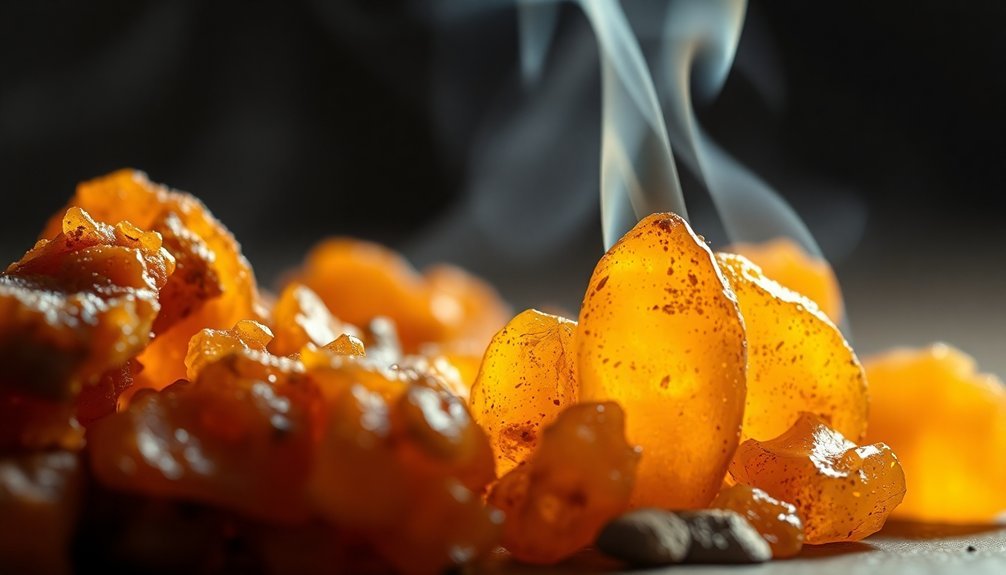
Three foundational principles guide the art of layering myrrh and frankincense with complementary notes. Start with a robust base of these sacred resins, making up 70% of your blend.
Then, introduce middle notes like lavender or geranium to create depth, followed by bright citrus top notes for balance. Remember to let each layer settle before adding the next.
- Warm sandalwood dancing with deep myrrh undertones
- Earthy patchouli grounding the ethereal frankincense
- Fresh lavender weaving through ancient resins
- Sparkling bergamot lifting the whole composition
You'll find that complementary notes enhance the natural richness of myrrh and frankincense.
These layering strategies help you create a well-rounded fragrance while maintaining the integrity of these precious base notes. The key is patience and proportion in your blending process.
Frequently Asked Questions
How to Blend Frankincense and Myrrh?
Mix 5 drops each of frankincense and myrrh in a dark glass bottle. Roll it between your hands to blend thoroughly. You'll want to store it in a cool, dark place for best results.
What Is the 30/50/20 Rule for Essential Oils?
The 30/50/20 rule guides you in creating balanced essential oil blends: use 30% top notes for initial scent, 50% middle notes for body, and 20% base notes to anchor your fragrance.
What Are the Base Notes of Frankincense?
You'll find frankincense's base notes are deep and resinous, featuring warm, earthy, and balsamic undertones. They're enhanced by subtle woody characteristics that provide a rich foundation for fragrance compositions.
What Does Frankincense and Myrrh Smell Like Together?
When you blend frankincense and myrrh, you'll experience a warm, resinous aroma that's both earthy and sweet. You'll notice bright, citrusy top notes balanced with deep, smoky undertones that create a calming atmosphere.
In Summary
You've now learned the essentials of blending these ancient resins as base notes. While myrrh and frankincense each shine individually, their combined synergy creates a foundation that's truly exceptional. Remember to store your blends properly, stick to recommended ratios, and always perform patch tests. With these guidelines in mind, you're ready to create sophisticated aromatherapy compositions that honor these time-tested ingredients' rich heritage.

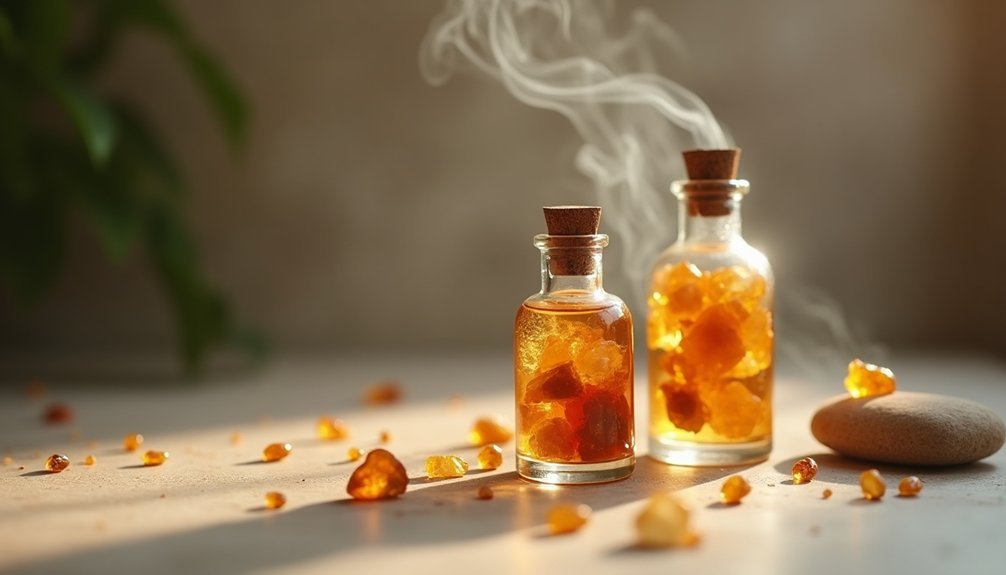
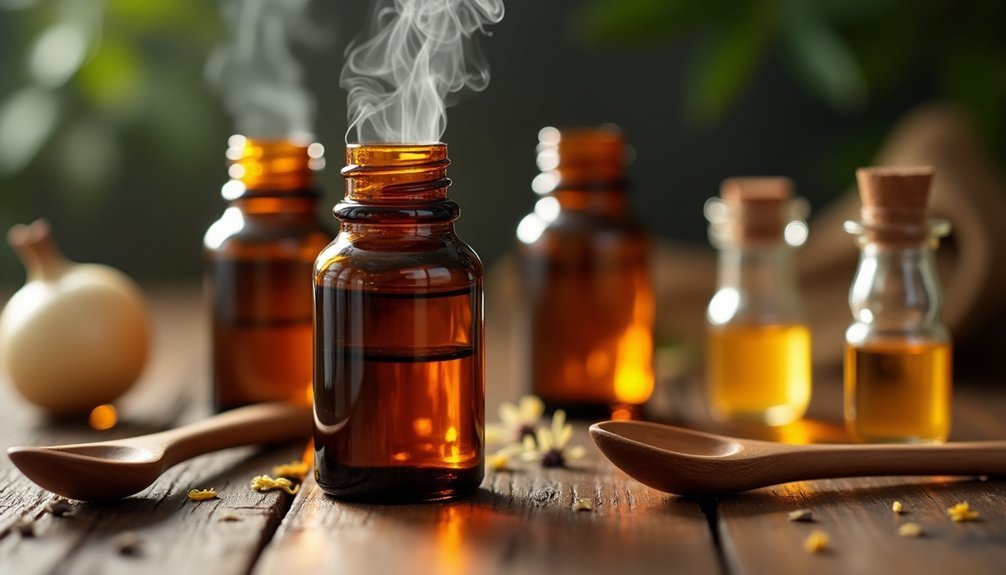
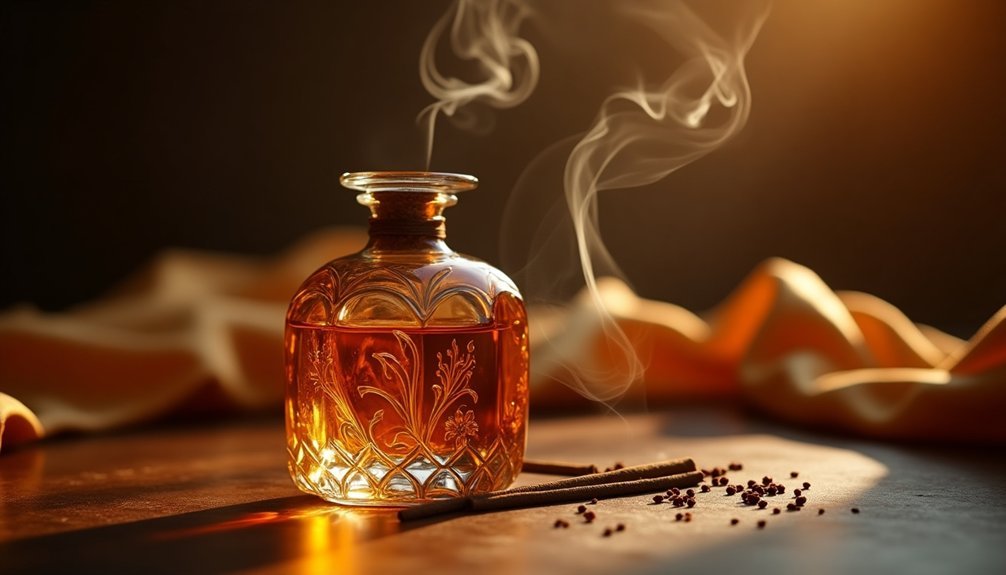
Leave a Reply